Arne Ekeland (1908 - 1994)
Arne Ekeland grew up among industrial workers in Eidsvoll, and throughout his adult life he identified with the working class. Much of his oeuvre can be seen as an attempt to develop a Marxist iconography. Ekeland distinguished himself early on as an interesting painter, and after his large solo exhibition at the art institution Kunstnernes Hus in Oslo in 1940, he was considered by many as the most important Norwegian painter of his generation. He drew inspiration from many sources – everything from Renaissance painting to Social Realist art. All his works in the Hafsten Collection are marked by a strong painterly quality. Ekeland was highly significant for the next generation of Norwegian painters.
During the war I visited him (Ekeland) with Bjarne Engebret and acquired " Spring picture". I remember it hanging in a small bedroom on the 2nd floor of his house, and we had to go out into the hallway to see it at some distance. […] Later during the war, in 1944, I bought the two pictures "The Red Rose" and "The Complaining Women" - in the same format as "Mother with children" from 1937. I remember we sat together for a long time, Bjarne Engebret, Ekeland and I, and at the last moment before the train should leave unfolded the large canvases, which we after a short glance decided to purchase, before we in a hurry left the house to reach the train. " (Halvdan Hafsten)
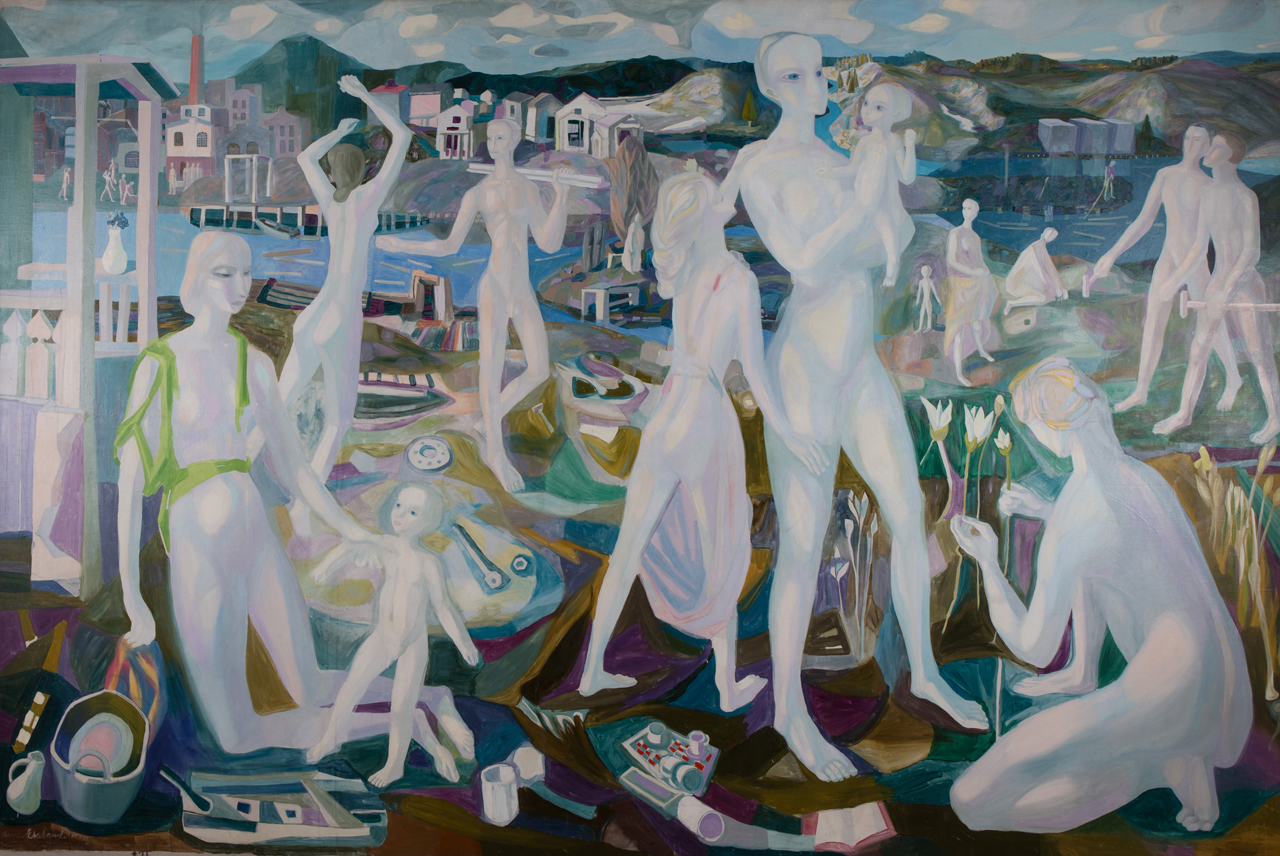
Spring picture, 1941. Purchased from the artist
‘Some time ago I took my students to the National Gallery. Arne Ekeland was one of the painters we studied. “Spring Picture” interested us a lot, and we discussed it in depth. We talked together as painters do when they stand in front of a work they’re excited about. Since you own this picture, I wanted to tell you a bit about it. I didn’t hold a lecture. The whole thing took the form of a conversation, but I gave an introduction by saying that “Ekeland, with his intense political involvement, is a renewer of Norwegian painting. “Spring Picture” expresses the painter’s strong life-affirming attitude. It is imbued with a passionate belief in life and humanity. It has intense strength and greatness because the artist masters every small detail in the powerful composition.” “He can of course do everything”, I remember saying. This is without doubt one of the most convincing works in newer Norwegian art. It is very good that you have deposited the work in the National Gallery. If you ever (I can’t believe you will) think about parting with this picture, you must give it to the museum. Otherwise, I think it’s so nice that it is precisely you who owns Spring Picture.’
Letter dated 1 December 1959, from Prof. Reidar Aulie. (From Halvdan Hafsten’s Archive)
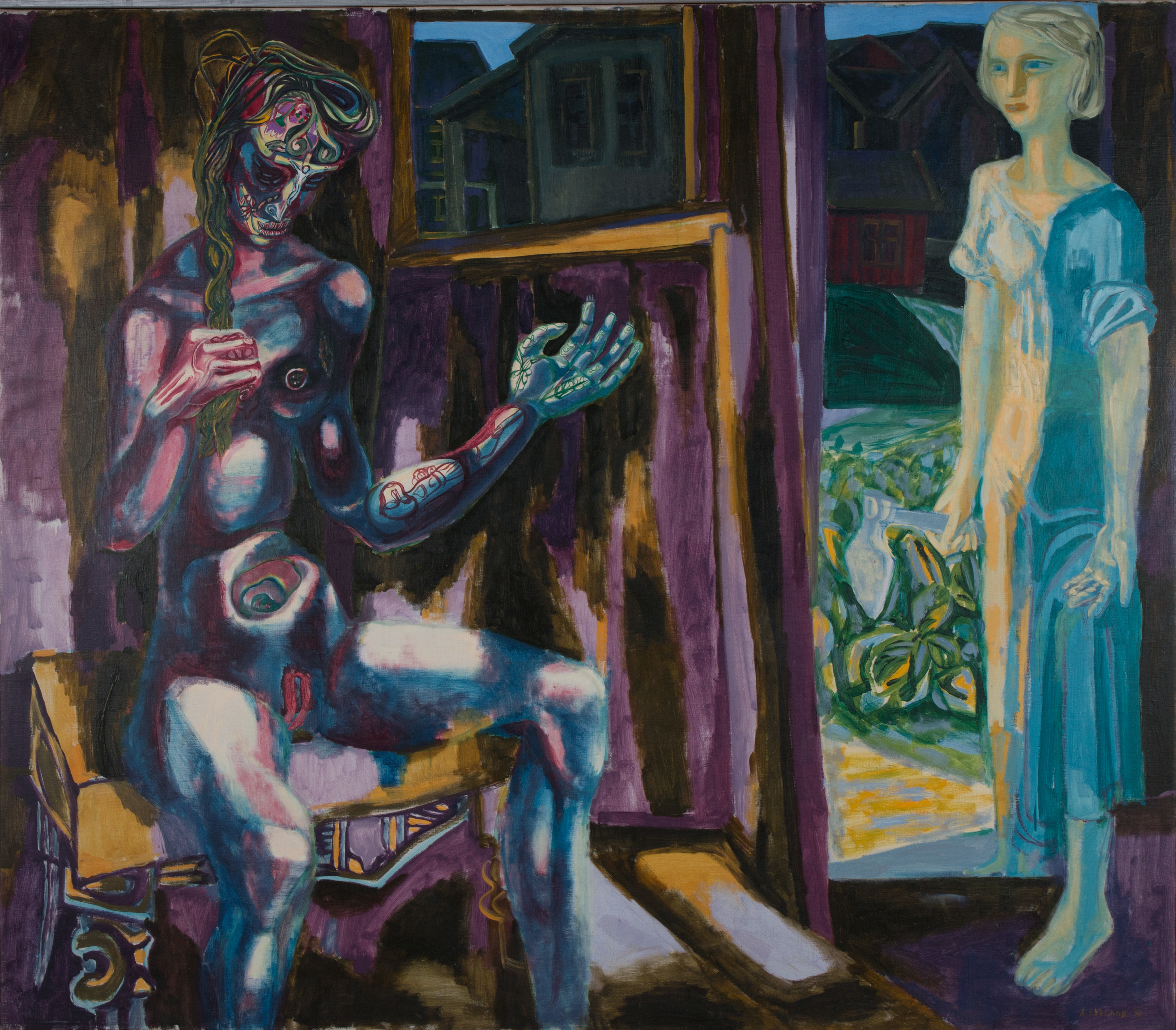
Come out into the sunshine, 1939. Purchased through the gallery director Jan Askeland, Oslo, 1967
‘Let us look at some of the pictures from that period. “Come out into the sunshine” has a simple message. The light-haired girl in the doorway appeals to a woman who sits inside, tattooed by whatever it is that hinders her from being out in the sun – the ideas are crucified by Christian dogmas. The melancholy violet colour stands in sharp contrast to the light colours outside.’
The Halvdan Hafsten Collection. Exhibition produced in collaboration with Bergens Billedgalleri and Riksgalleriet in 1975. Excerpt from the catalogue editor’s foreword. (From Halvdan Hafsten’s archive)
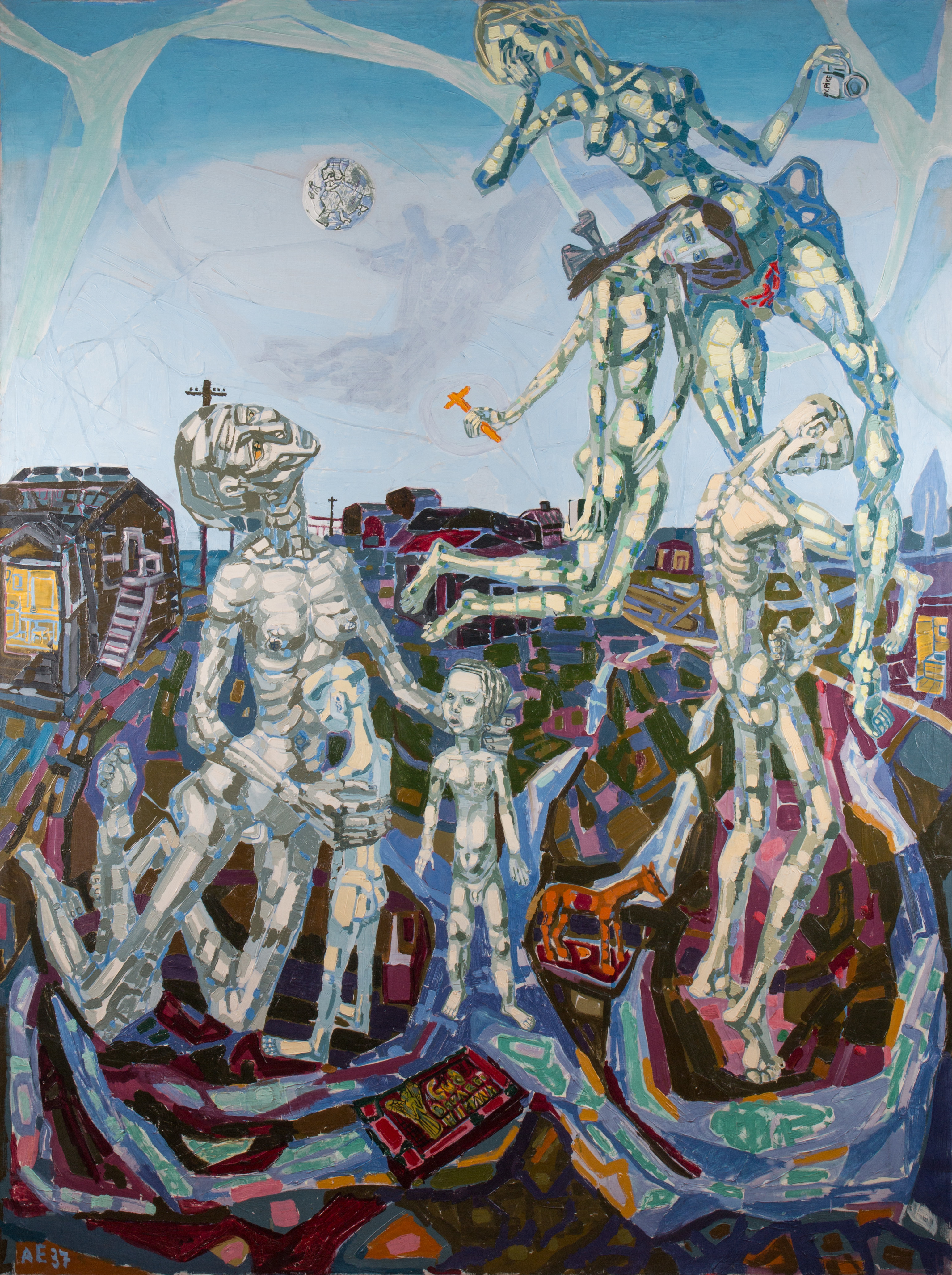
Mother with Children, 1937. Purchased from Kunstnernes Hus, Oslo, 1940.
‘“Mother with Children” is no idyllic family situation. The picture seems to be about raising children, punishment, a feeling of guilt, inhibitions and shame. While the mother still has a firm grip on the youngest children, the youths to the right are about to break free. Untethered by the weight of gravity, they float out into the pictorial space, toward a distant planet on which a map of Europe is drawn. Equipped with simple attributes – for instance a hymnal and a cup with the inscription “Nice girl” – they are each locked inside their own world, as victims of Christian dogmas, oppressive sexual morals and bourgeois role models. This treatment of the problem of guilt went hand-in-hand with that era’s interest in psychoanalysis. The depiction also contains an obvious Surrealist aspect.’
Norsk kunst fra reformasjonen til i dag (Norwegian Art from the Reformation to Today). Booklet and slide series no. 18. Steinar Gjessing: Maleriet i 1930-årene (Painting in the 1930s). Statens filmsentral 1987. (From Halvdan Hafsten’s Archive)
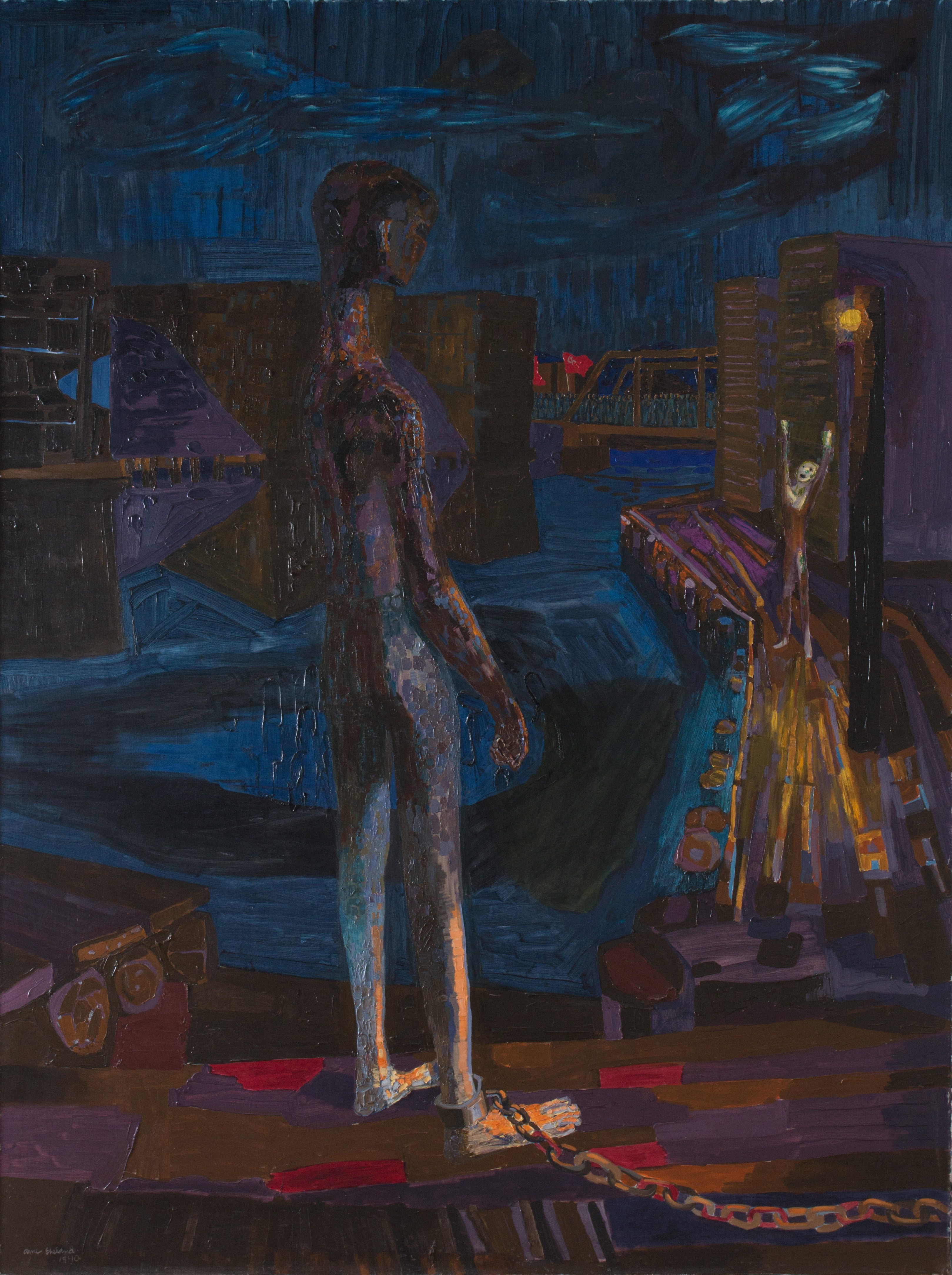
The Message, 1940. Purchased from Galleri Per, Oslo, 1947
‘“The Message” depicts a prisoner who receives the message that freedom is at hand. The people have crossed the bridge and the red communist flag waves overhead.’
Halvdan Hafsten Collection. The exhibition is organised through collaboration between Bergens Billedgalleri and Rikksgalleriet in 1975. Excerpt from catalogue editor’s foreword. (From Halvdan Hafsten’s Archive)
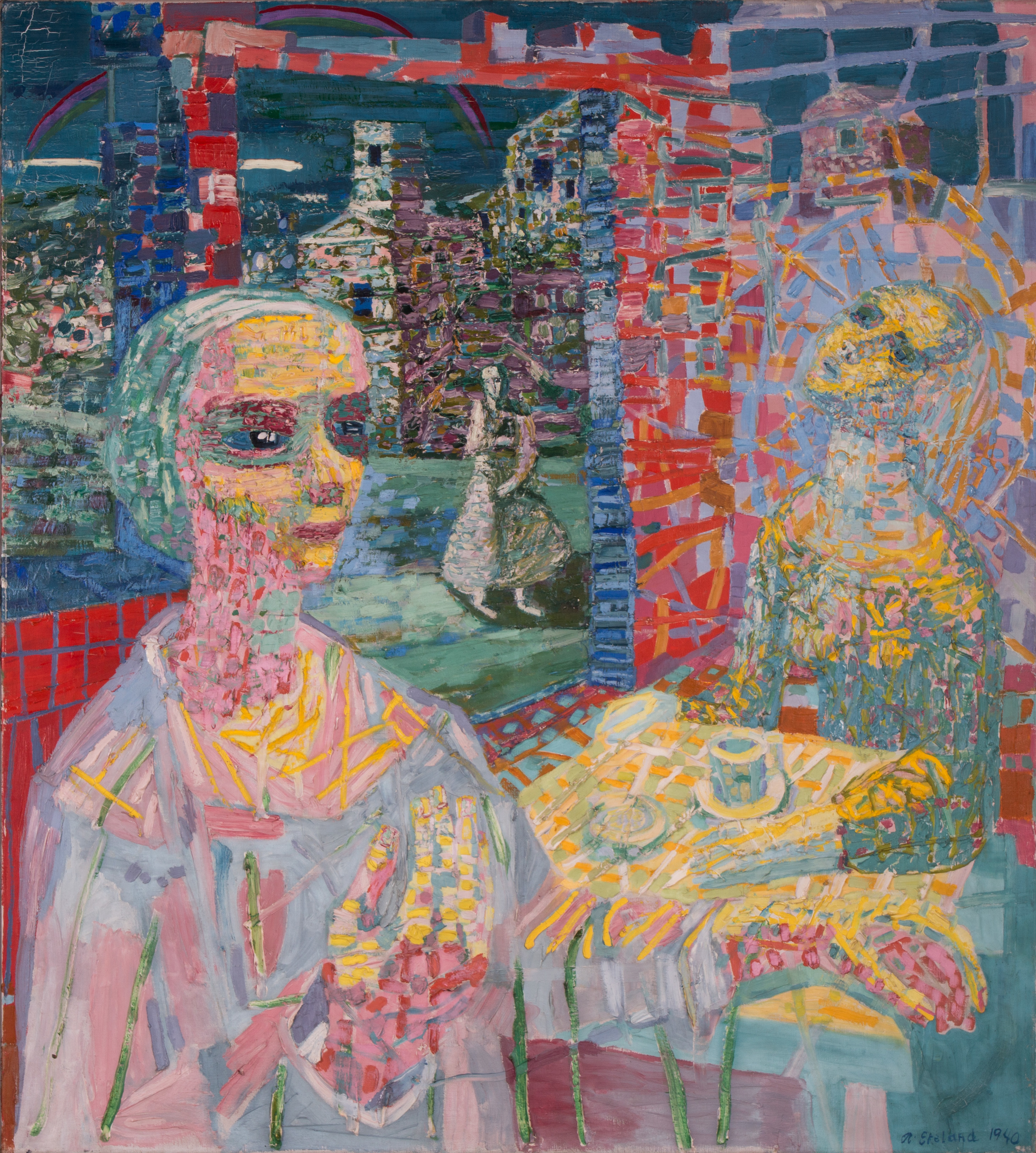
From the Village, 1940. Purchased from the artist
‘Ekeland is a so-called “social painter”, also a “tendency painter”. His paintings often contain a message for people […] The “mosaic-like” effect, which he achieves by putting colours into small squares, causes the colours to live intensely in the pictorial plane and creates a strong impression.’
Travel guide Herman Bendixen (Traveling exhibition no. 5, Nordland, Hedmark and Telemark counties 1954/55). (From Halvdan Hafsten’s Archive)
Article and archive selection
Hanne Beate Ueland, director Stavanger art museum
Photos
Stavanger art museum